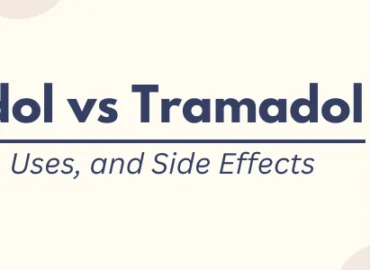Is Soma a Controlled Substance? Everything You Need to Know
May 26, 2025 Global_Online_PillsIf you’ve been prescribed the Soma drug or are researching muscle relaxants, you might be wondering: Is Soma a controlled substance? The short answer is yes—Soma, also known by its generic name Carisoprodol, is a controlled substance in the United States.
In this blog, we’ll break down what that means, why it’s classified as such, and what you need to know if you’re using or considering this medication.
What Is Soma (Carisoprodol)?
The Soma drug is a prescription muscle relaxant used to relieve musculoskeletal pain and discomfort, often due to injuries, strains, or spasms. It works by interrupting the pain signals between the nerves and the brain, which helps promote relaxation and reduce discomfort.
Soma is typically prescribed for short-term use (usually no longer than two or three weeks) because of its potential for dependence and the lack of evidence supporting long-term effectiveness.
Is Soma a Controlled Substance?
Yes, Soma is classified as a Schedule IV controlled substance under the Controlled Substances Act (CSA) in the United States.
What does “Schedule IV” mean?
Drugs in this category are considered to have:
A relatively low potential for abuse compared to Schedule III drugs
Accepted medical uses
Limited risk of physical or psychological dependence
This means the Soma drug is subject to federal regulation, much like medications such as Xanax and Ativan.
Is Soma a Narcotic?
While often asked, “Is Soma a narcotic?”, the answer is technically no—Soma is not classified as a narcotic. Narcotics typically refer to opioids, which Soma is not. However, due to its sedative effects and potential for abuse, it is sometimes misused like a narcotic and may be combined with opioids or benzodiazepines, increasing the risk of overdose or dependence.
So, although Soma is not a narcotic, its effects and abuse potential have led many to associate it with narcotic-like risks.
Why Is Soma Regulated?
Initially, Soma was not considered a controlled substance. However, rising concerns over misuse and addiction led the DEA to reclassify it. As of January 2012, the DEA officially designated Soma as a Schedule IV controlled substance.
Some of the key concerns include:
Drowsiness and impaired motor function
Risk of dependence or withdrawal symptoms
High potential for abuse, especially when mixed with alcohol or other depressants
Dangerous interactions when taken alongside narcotics or benzodiazepines
Legal Implications of Soma’s Controlled Status
Since the Soma drug is controlled:
You must have a valid prescription to obtain it legally.
Doctors must follow federal guidelines when prescribing it.
Possession or distribution without a prescription is illegal and could result in fines or imprisonment.
Safe Use Tips
If prescribed Soma:
Take the medication exactly as prescribed.
Avoid alcohol and other central nervous system depressants while using it.
Do not share Soma with others.
Talk to your doctor before stopping the medication to avoid withdrawal symptoms.
Final Thoughts
Soma can be an effective treatment for short-term muscle pain, but it carries risks that warrant its classification as a controlled substance. While Soma is not a narcotic, it can still be habit-forming and should be used with caution.
If you or someone you know is using the Soma drug, understanding its legal status and safety concerns is essential. Always consult a healthcare provider for guidance tailored to your individual needs.




